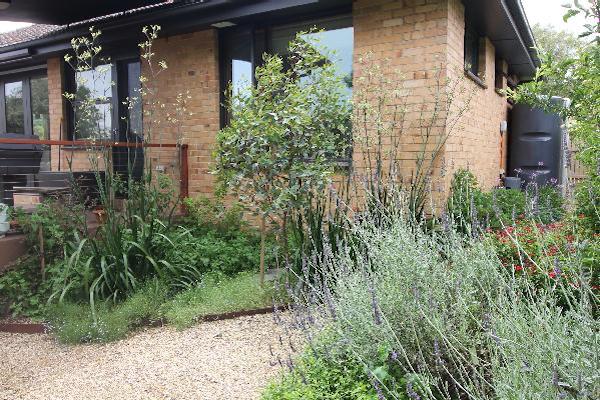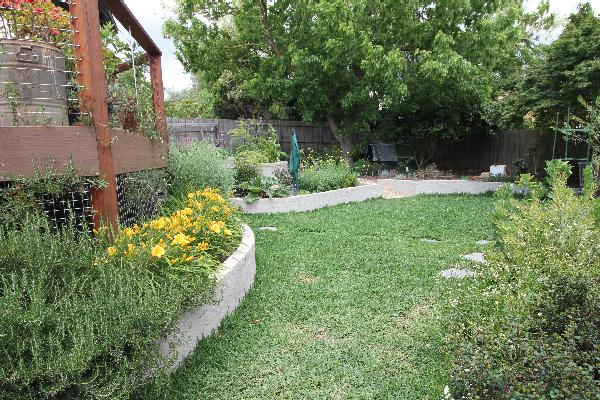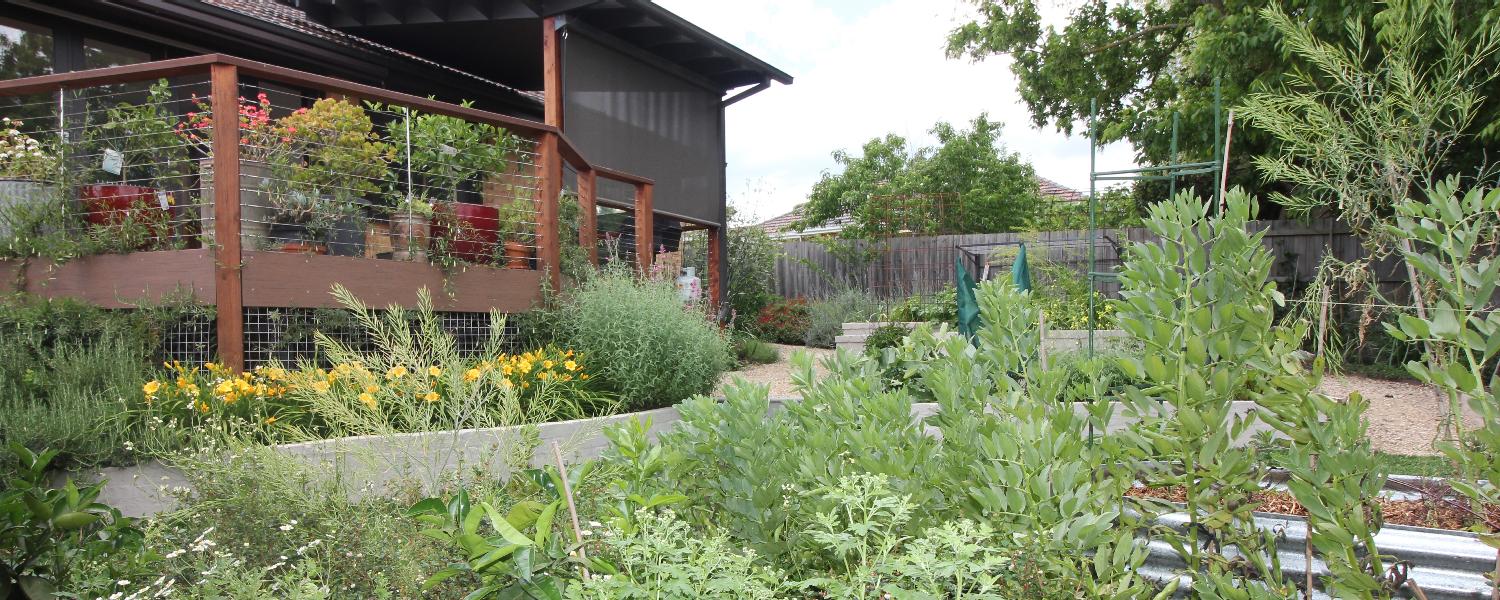
Project
Native & edible garden
As part of a sustainable house upgrade, the garden was also rejuvenated with rain water tanks, local and edible natives, fruit trees, a bee hive and chickens. The verge grass was replaced with indigenous native plants, including kangaroo grass (Themeda triandra), native mint (Mentha australis) and bulbine lily (Bulbine bulbosa) and the driveway grass strip was replaced with 80 very fruitful strawberry plants. Annual vegetables now thrive in raised vegetable beds, and perennial herbs and vegetables are dotted around the garden, including perennial bell pepper and horseradish. An abundance of flowers enlivens this garden, ensuring ample food for pollinating and beneficial insects. The owners now spend many hours enjoying their garden oasis.

Front garden
The front garden spills out onto the verge, where a mass of indigenous grasses and wildflowers welcome visitors. Coastal wattles are being grown for screening and for their edible seeds, and we are experimenting with keeping them to a manageable size with regular pruning, as you would with other garden plants. A small circular lawn references the 1950’s house and is hidden behind this mass of blooms and foliage. Giant kangaroo paws and long flowering grevilleas bring colour and birds into the picture.
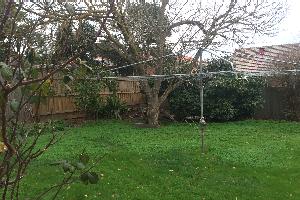
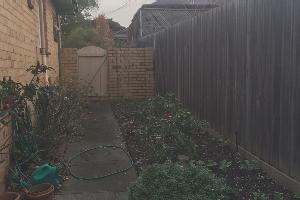
TRANSFORMATION
The original garden had a lot of lawn and no edible or native plants. Some established trees and shrubs were retained to provide shade, screening and structure. The traditional Hills Hoist clothesline was replaced with a smaller and less obtrusive one and the whole garden was brought out of the 1950’s into the 2000’s, creating spaces for insects and bees, birds and chickens and the very happy people that live here and tend this garden.

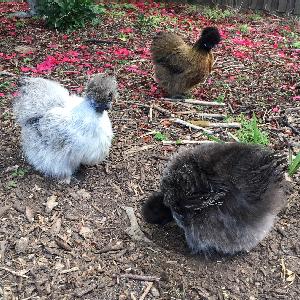

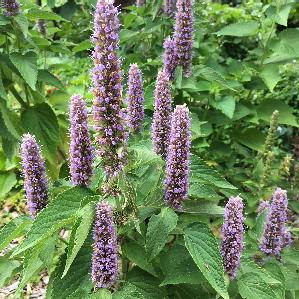
Some plants, some chooks
Above, from left to right, are Californian poppies, Jack’s beloved bantams, the headily scented passionfruit marigold Tagetes lemmonii and the blue spikes of anise hyssop Agastache foeniculum.
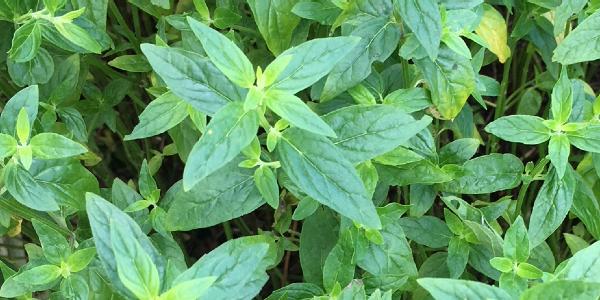
NATIVE MINT
Mentha australis
Also called river mint, this plant is much more drought hardy than that name suggests, so we tend to call it native mint. Reaching around 20-30 cm high it is deciduous in winter, but shouldn’t be cut down to ground level in winter like European mints, but benefits from being trimmed by half instead. The indigenous use is to crush a few leaves in your hand and breath in the strong scent, to relieve a headache. The leaves also make a delicious tea or cool drink and can be added to salads or salsa. Shop
